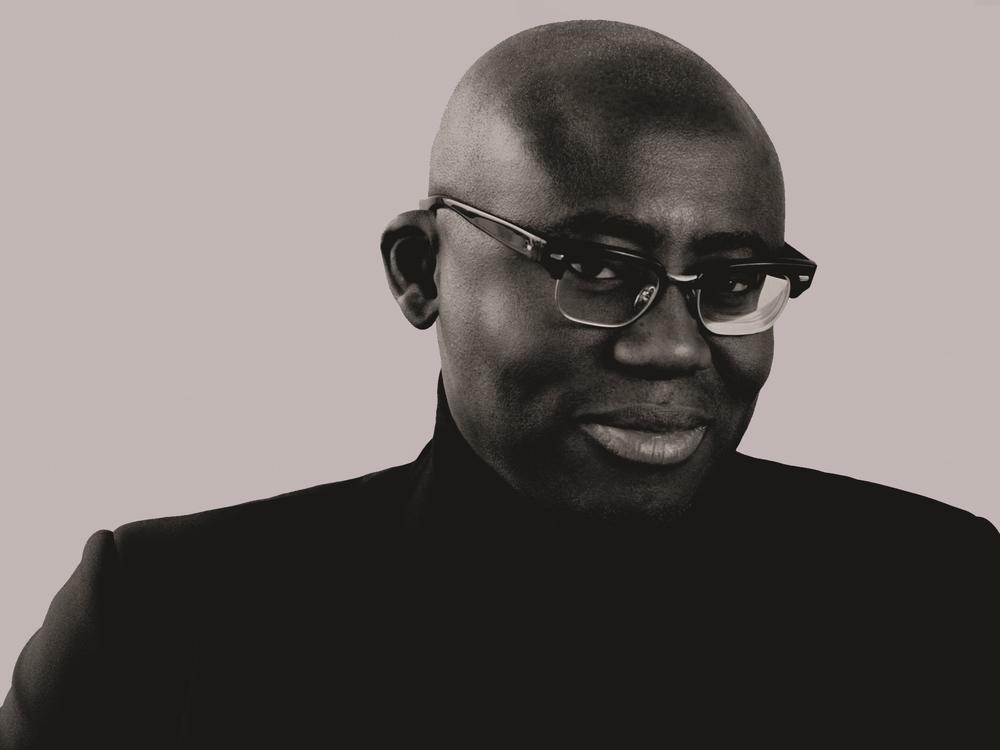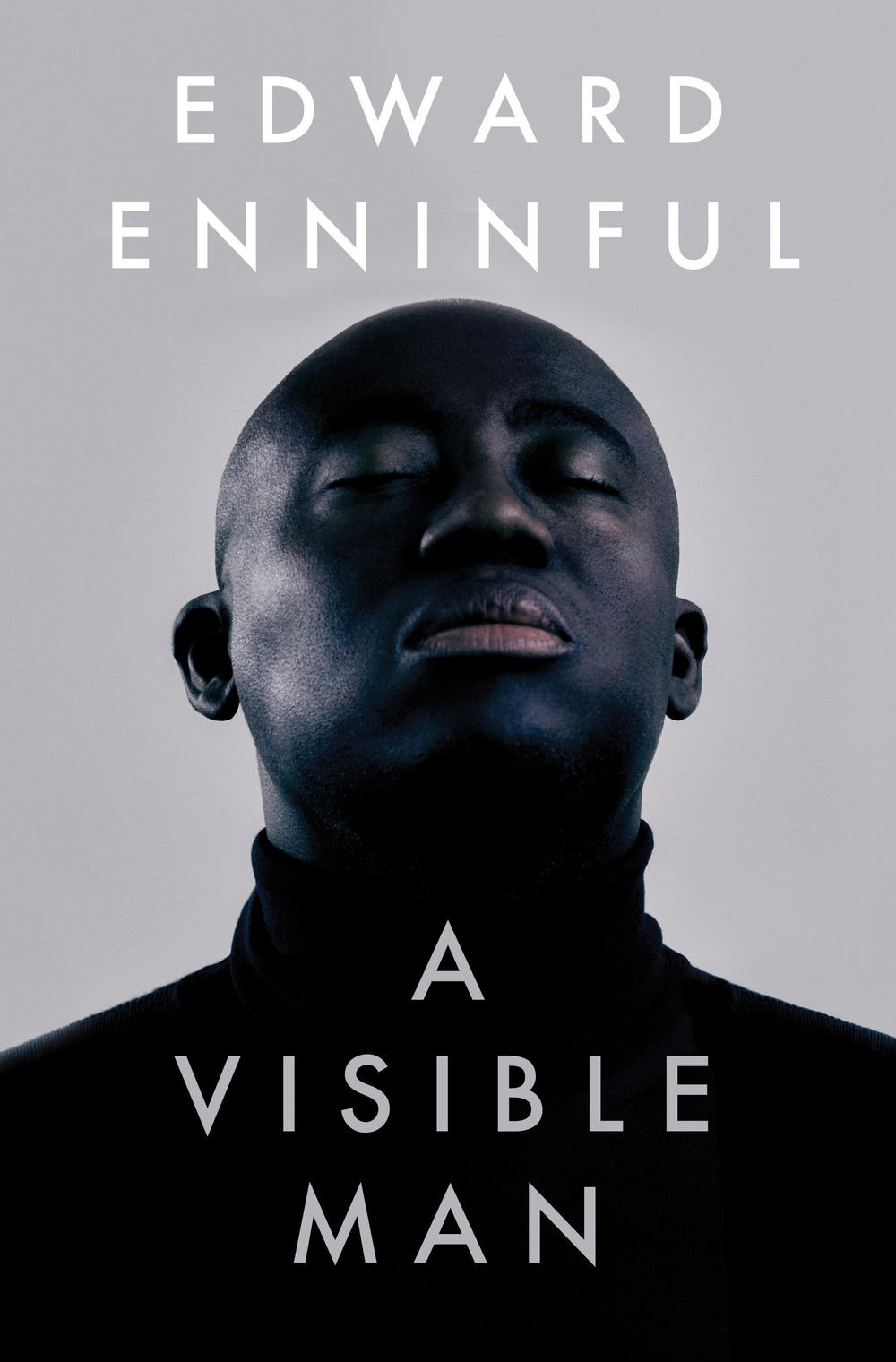Section Branding
Header Content
'British Vogue' editor-in-chief wants his magazine to reflect the world he sees
Primary Content
Black women don't sell magazines. That's what Edward Enninful heard from the very beginning of his career in the fashion industry. And for him, that just sounded absurd.
"I [was raised] by my mother, who was a seamstress, and she would make clothes for the most incredible women, women of all sizes and women of all skin tones and ages," Enninful says. "For me, fashion was always such an inclusive, beautiful thing."
The reality of the industry was often different. Enninful's family emigrated to the UK from Ghana when he was a child. As a teenager, he was "discovered" by a modeling agent on a train, but when he went to casting calls, he was often dismissed because of his race.
"I'll be told I was too dark or that my lips were too big or my nose was too wide," he says. "I really saw firsthand that being dark skinned or being Black wasn't so desirable back then."
At 18, Enninful began to work behind the camera for i-D, a magazine that focused on young people's street style. As the magazine's art director and at subsequent publications, he made it a goal to represent the world in all its diversity: "Even when people would say to me, 'Oh, another Black model on the cover,' I used to say, 'Yes, and here's another one!' ... And I was never really scared because I knew that the world that I saw had to be reflected."
This insight is one of the driving forces behind Enninful's three-decades-long career as a stylist, art director and editor for some of the most popular fashion magazines and brands in the world. He's served as editor-in-chief of British Vogue since 2017, holding the distinction as the first male Black and gay editor in the magazine's 106 year history.
Enninful writes about his life and career in the memoir, A Visible Man.
Interview highlights
On growing up in his mother's clothing studio in Ghana
My mother had an atelier, about 40 seamstresses, so there was almost like a huge room in the bungalow and the seamstresses were all around sewing. And my mum would be in another room. If you know African fabrics, you know the colors. African women love to dress. There is no dressing down with African women. So I was my mother's assistant. I'll be sketching with her. I'll be literally zipping women into sort of corseted dresses. I'll be playing with eyelets and I was transformed by what my mother showed me, what those days showed me, and when people talk about today and inclusivity and diversity, I just knew from a young age that, really, beauty for me started with curvy women.
On how his mother's African fashion has informed his editorial eye
I remember when my mom always loved nipped in waists, always like big sleeves, three layered sleeves and ... three layered peplums, [in] African wax prints. And all I remember were those headscarves that would literally touch the sky, and the skirts were always really, really tight, so the women always hobbled along. But it was all about accentuating a woman's curves, not hiding them. So it was like an hourglass. And I remember those beautiful, beautiful prints — oranges, greens, greens mixed with oranges, yellows mixed with browns, sort of unexpected colors, which even to this day, when I'm putting colors together, people always said, "Oh, that's a weird combination," but it works.
On becoming the fashion director at i-D when he was 18
There I was, an 18 year old in charge of this important magazine. So what did I do? I just threw myself into it. I learned everything I could about magazines. I didn't sleep. I would literally style the covers. I would work on cover lines. I would work on features inside the magazines. I worked on the shopping pages. I mean, it was like a one-man army. And then on top of that, I'd be in the advertising department learning how to sell the magazine. And we had these club nights. So I went to those club nights as well, so we could show the world what we were doing as a magazine and get them to invest. I was in the art department. When you're 18 and you feel like an imposter, you just learn everything you can learn. So I didn't sleep. All I did was work and learn my craft. Even though it was quite difficult [for] the next however many years, at that moment in time, I knew I couldn't fail.
On the importance of empathy in fashion
When I'm working with Rihanna or Beyoncé or an incredible icon, I know from even a little expression on their face if they're comfortable or even a little wiggle of discomfort. I notice all those things because of my mother's studio and studying what made a woman feel really comfortable and really feel at her best.
Had I not been around my mum, soaking in women and the beauty of women, I probably wouldn't have that sensitivity. And really, when I picked up those early days was empathy. ... You have to be able to feel what somebody is feeling because, I always say clothing — it's not just clothing, it's armor. It's how you want the world to see you when you leave your house, it's how you want to be perceived. So a lot goes into it. So you have to really have empathy as a designer, as a stylist towards women, women's bodies and essentially how they feel.
On the 2008 all-Black issue of Vogue Italia, featuring cover-to-cover Black people, which launched his career to the next level
The Black Issue started [after] I went to what we call the ready to wear collections, twice a year when designers show their clothes to the world. And I just remember sitting there feeling really sad because out of a lineup of 40 models, there wasn't one Black model. There wasn't one! ... And I remember returning back to New York because I was working in New York at the time on W Magazine and saying to my collaborator, Steven Meisel, who was the premiere photographer for Italian Vogue, he shot all the covers. And I was sitting with Steven and I was being really sad and said, "Steven, there are no Black models for the shows anymore. There are no Black models there, not in magazines." ...
Steven was like, "Let me speak to Franca Sozzani." ... [She] was the editor of Italian Vogue at the time and a real visionary, literally came back and said, "Let's do an issue full of Black women ... cover to cover." So it was a really incredible moment. I worked on a shoot with Toccara Jones, with Naomi Campbell, but it was incredible to see an issue that had Iman, Beverly Johnson and Tyra Banks as well as all the young models. And it was such an incredible idea and incredible moment. It sold out. And I think they had to reprint, at that time, 40,000 copies. But it showed that Black can sell, that actually the world was waiting or the world wanted it, but they just weren't being offered it. That's what the Black issue showed.
On what it meant to receive an award from the British Empire, as an immigrant
I just realized, oh, my God, I had contributed something to my country. And I wasn't that little outsider who arrived on the plane with my siblings, that I'd been able to take opportunity and really work hard. But while doing that also, I was able to bring people up with me, people of color up with me. ... So when I received the award, it was really a wonderful moment, especially also for my father, who literally had to come to a different country, start a whole new life, not be able to work and not have any money and bring up six kids. So for him, it was such a special moment. There was also one of the reasons why I agreed to accept it, because it made him very proud.
On drawing on his imagination while recovering from eye surgery
While I was in the darkness, not being able to be visually stimulated, I dreamt bigger. I saw Technicolor. I saw colors. And I came out of the three weeks in the darkness to create one of my most memorable covers with Rihanna as the Queen for W Magazine. ... I may not be able to style if [I lose my vision], but I know that I can withdraw into imagination because in my imagination, I see everything. I see beauty.
On getting ideas from his dreams
Sometimes I'll be really fighting with myself and not coming up with an idea and I'll go to sleep. And then I'll wake up and I'll see all the images. I'll see the model, I'll see the location, I'll see the hair, I'll see the makeup. And for years, I thought that was cheating. [It was] my mom who said, "That's actually a gift," because I didn't know ... what a gift was. "It's a God given gift and you have to really look after it."
Ann Marie Baldonado and Seth Kelley produced and edited this interview for broadcast. Bridget Bentz, Molly Seavy-Nesper and Beth Novey adapted it for the web.
Copyright 2022 Fresh Air. To see more, visit Fresh Air.


